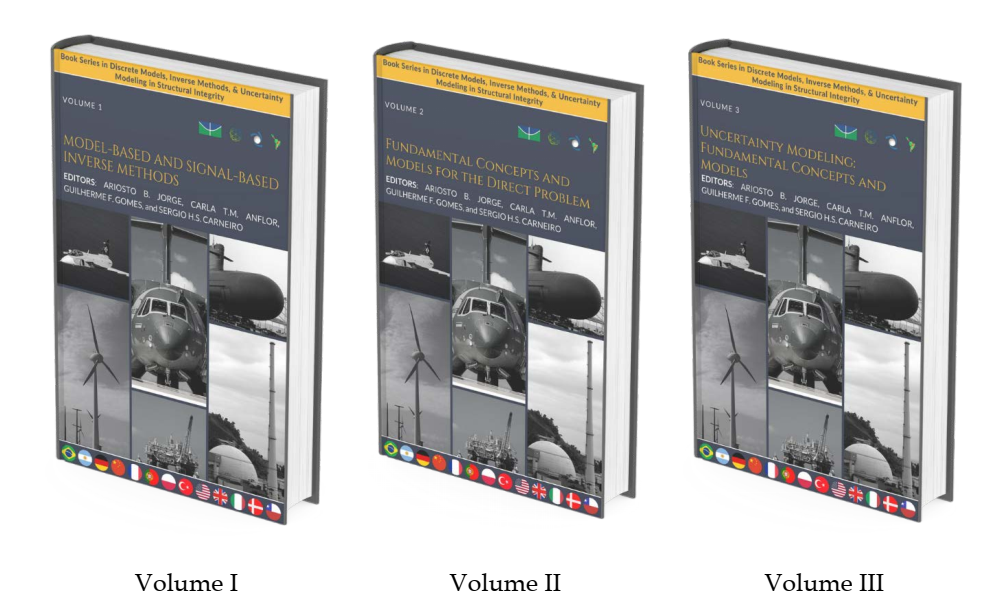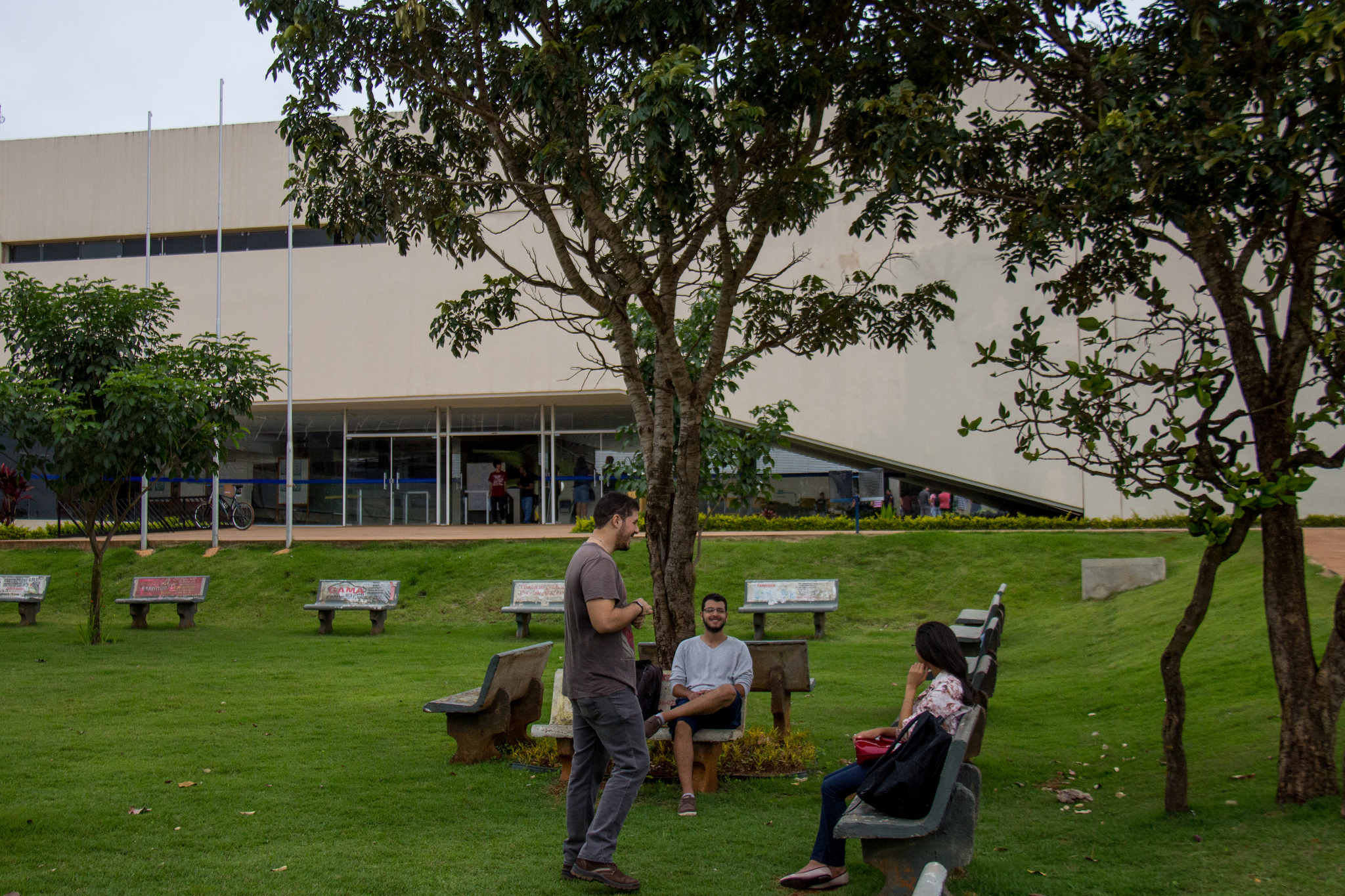Book Series
Book Series
University of Brasília (UnB)
Post-Graduate Program - Integrity of Engineering Materials (PPG-Integridade)
Book series in
Discrete Models, Inverse Methods, & Uncertainty Modeling in Structural Integrity
Book Series Editors:
Dr. Ariosto Bretanha Jorge (Leading Editor, Visiting Professor at PPG-Integridade – UnB)
Dr. Carla Tatiana Mota Anflor (Professor at PPG-Integridade – UnB)
Dr. Sergio Henrique da Silva Carneiro (Collaborating Professor at PPG-Integridade – UnB)
Dr. Guilherme Ferreira Gomes (Professor at UNIFEI; member of GMEC/UnB)

Book Series Scope
This book series is an initiative of PPG-Integridade - UnB, organized as a collaborative work involving researchers, engineers, scholars, from several institutions, universities, industry, recognized both nationally and internationally.
The book series is published as an “Open Access”, non-profit, digital version (pdf), with ISBN from UnB, and with D.O.I. generated for the books and for each chapter separately, with the kind support of LAJSS (https://www.lajss.org/index.php/LAJSS).
The scope of the Book series is related to the broad areas of interest of LAJSS, and also of associations such as ABCM (https://www.abcm.org.br/) and ABMEC (http://www.abmec.org.br/). To increase visibility of the Book Series, initial contacts were made with both associations, ABCM and ABMEC, for further support for the divulgation of the Book Series effort in their websites, as appropriate.
The book series is an activity related to the Research, Development & Innovation (R,D&I) Project at UnB, entitled: “Technological Demonstration Platform for Inverse Methods and Uncertainty Modeling Integrity of Structures and Components”, available at the UnB Central Library (in Portuguese) (https://repositorio.unb.br/handle/10482/39570).
The books series encompass the relevant project topics, including chapters covering:
· Fundamentals. Topics covered include: Basic Principles, Concepts & Foundations, for the Direct & Inverse Problems (including model-based and signal-based inverse methods), and for the Modeling of Uncertainties;
· Special Topics, Applications, and Research Review. Topics covered include: Research Review, State-of-the-art & Future Trend Topics, for the Direct & Inverse Problems (including model-based and signal-based inverse methods), and for the Modeling of Uncertainties.
The different books and/or book chapters were prepared as a collaborative work by researchers, engineers, scholars, involved in research, development and applications in the related areas.
The criteria for the inclusion of books and series of books in the “Portal de Livros Digitais da UnB” can be seen in the link (in Portuguese): https://livros.unb.br/index.php/portal/criterios
Just for reference, criteria for classification of books and book chapters may be found at BOOK QUALIS (in Portuguese):
Book series scope and Instructions for authors
(Link for full text of instructions and deadlines)
Template available in *.DOC and *.TeX formats. Download it here !
Book Series Volumes
- Volume I – Model-based and Signal-Based Inverse Methods
- Full book
- Chapters
- Chapter 1. Introduction to Optimization and Identification Techniques for Model-Based and Signal-Based Inverse Problems. https://doi.org/10.4322/978-65-86503-71-5.c01
- Chapter 2. Overview of Some Optimization and Identification Techniques for Inverse Problems of Detection, Localization and Parameter Estimation. https://doi.org/10.4322/978-65-86503-71-5.c02
- Chapter 3. An overview of Linear and Non-linear Programming methods for Structural Optimization. https://doi.org/10.4322/978-65-86503-71-5.c03
- Chapter 4. Overview of Traditional and Recent Heuristic Optimization Methods. https://doi.org/10.4322/978-65-86503-71-5.c04
- Chapter 5. Application of Machine Learning and Multi-Disciplinary/Multi-
Objective Optimization Techniques for Conceptual Aircraft Design. https://doi.org/10.4322/978-65-86503-71-5.c05 - Chapter 6. On a Bio-Inspired Method for Topology Optimization via Map L-Systems and Fractone Modeling. https://doi.org/10.4322/978-65-86503-71-5.c06
- Chapter 7. Fundamentals on the Topological Derivative concept and its classical applications. https://doi.org/10.4322/978-65-86503-71-5.c07
- Chapter 8. Ultrasound Obstacle Identification using the Boundary Element and Topological Derivative Methods. https://doi.org/10.4322/978-65-86503-71-5.c08
- Chapter 9. Fundamental Concepts on Wavelet Transforms. https://doi.org/10.4322/978-65-86503-71-5.c09
- Chapter 10. Application of Wavelet Transforms to Structural Damage Monitoring & Detection. https://doi.org/10.4322/978-65-86503-71-5.c10
- Chapter 11. Inverse Methods using KF, EKF, EIF, PF, and LS Techniques for Detection, Localization, and Parameter Estimation. https://doi.org/10.4322/978-65-86503-71-5.c11
- Chapter 12. Fundamental Concepts for Impedance-based Structural Health Monitoring. https://doi.org/10.4322/978-65-86503-71-5.c12
- Chapter 13. Fundamental Concepts for Guided Lamb Wave-based Structural Health Monitoring. https://doi.org/10.4322/978-65-86503-71-5.c13
- Chapter 14. Machine Learning and Pattern Recognition: Methods and Applications for Integrity Monitoring of Civil Engineering Structures. https://doi.org/10.4322/978-65-86503-71-5.c14
- Volume II – Fundamental Concepts and Models for the Direct Problem
Full Book
https://doi.org/10.4322/978-65-86503-83-8
Chapter 1. Introduction to the Direct Problem: Materials, Technologies, and Discrete Modeling
https://doi.org/10.4322/978-65-86503-83-8.c01
- Part I - Technologies, Structural Integrity & Material Modeling
-
Chapter 2. Technologies and Materials Issues Related to Naval and Ocean Engineering
-
Chapter 3. New Advances in Thermoplastic Commingled Composites: Processing and Molecular
Dynamics -
Chapter 4. The Influence of Weaving Patterns on the Effective Mechanical Response of Reinforced
Composites - A Study Through Homogenization -
Chapter 5. Auxetic Structures: Parametric Optimization, Additive Manufacturing, and Applications
-
Chapter 6. Additive Manufacturing of Ti-Alloys for Aerospace, Naval and Offshore Applications
-
Chapter 7. Review of Low Cycle Fatigue: Issues in Naval and Offshore Engineering
-
Chapter 8. Modeling of Damage in Turbine Blades for Large Deformations
-
Chapter 9. Stresses on Expansion Joints Used in Penetrations
-
Chapter 10. Leak-Before-Break Technology for Piping in Nuclear Industry
-
Chapter 11. Fatigue Control in Angra Nuclear Power Plants
-
Chapter 12. On the use of Modal Test Data in Inverse Problems: Fundamentals and Applications
-
Chapter 13. Application of Deep Learning Techniques for the Impedance-based SHM to the Oil &
Gas -
Chapter 14. Noise, Vibration, and Health and Usage Monitoring Systems (HUMS) of Aircraft
Dynamic Components -
Chapter 15. On Vibration Analysis and Health and Usage Monitoring Systems (HUMS) of Dynamic
Components of Helicopters -
Chapter 16. Model-Based Parameter Identification for Helicopter Main Rotor Balancing and
Tracking Using Once-per-Revolution Vibration Datahttps://doi.org/10.4322/978-65-86503-83-8.c16
-
- Part II - Discrete Modeling: Finite Element, Boundary Element, Meshfree Methods
-
Chapter 17. Finite Element Method for Structural Integrity Problems
-
Chapter 18. An Application of Finite Element Method and Sensitivity Analysis in Structural
Dynamics -
Chapter 19. The Boundary Element Method for Potential Problems
https://doi.org/10.4322/978-65-86503-83-8.c19
Chapter 20. The Boundary Element Method for Structural Problems
-
Chapter 21. The Boundary Element Method for Damage Modeling
-
Chapter 22. Application of Roving Mass Technique Associated with Wavelet Transform to
Structural Damage Detection and Localization -
Chapter 23. Local Mesh Free Methods in Linear Elasticity and Fracture Mechanics
-
Chapter 24. Meshless smoothed point interpolation methods for damage modelling
-
Chapter 25. A New Non-Iterative Reconstruction Method for Solving a Class of Inverse Problems
-
- Part I - Technologies, Structural Integrity & Material Modeling
- Volume III – Uncertainty Modeling: Fundamental Concepts and Models
Full Book
- Chapters
- Chapter 1. Introduction to Probabilistic Methods & Uncertainty Modeling in Direct & Inverse Problems
- Chapter 2. Application of Data Science in the Sustainable Energy Industry
- Chapter 3. Overview of Classic Surrogates and Metamodeling Strategies in Structural Analysis
- Chapter 4. Uncertainty Quantification in Inverse Kinematics Computation of Space Robots by Neural Networks
- Chapter 5. Metamodel-Based Simulation Optimization: A Systematic Literature Review
- Chapter 6. Principal Component Analysis: An Overview and Applications in Multivariate Engineering Problems
- Chapter 7. Challenges for Structural Health Monitoring: Nonlinearities and Uncertainties
- Chapter 8. Sensor Placement Optimization of a Helicopter Main Rotor Blade
- Chapter 9. Challenges for Structural Health Monitoring: Nonlinearities and Uncertainties
-
Chapter 10. Applications of Numerical and Statistical Methods for Monitoring and Control Engineering Variables in a Concrete Dam
-
Chapter 11. Application of Statistical Processing Techniques to the Impedance-based SHM for the Oil & Gas Industry
-
Chapter 12. On Error Estimators and Bayesian Approaches in Computational Model Validation
-
On Kriging Techniques & Impedance-based SHM as Applied to Damage Detection in 2D Structures
-
Chapter 14. Time Series Models and Expansion Optimal Linear Estimation for Time-Dependent Reliability Analysis
-
Chapter 15. Bayesian Optimal Experimental Design
-
Chapter 16. Airplane Optimal Robust Design Combined with an Entropy-Statistics Unsupervised Learning Classification Algorithm
-
Chapter 17. On Error Estimators and Bayesian Approaches in Computational Model Validation
-
Chapter 18. Random Fatigue Under Uniaxial and Multiaxial Loading Conditions
-
Chapter 19. On Error Estimators and Bayesian Approaches in Computational Model Validation
https://doi.org/10.4322/978-65-86503-88-3.c19
Virtual Workshop on Models and Methods in Integrity of Structures and Components
- A divulgation effort for the Book Series, in the format of a Virtual Workshop, is being prepared as a webpage at PPG-Integridade / UnB, containing intended presentations, videos and related materials.
- Target public: industry and academia professionals, researchers, engineers, professors, scholars.
- Contributors / speakers include interested chapter co-authors, academia and industry professionals.
Link for virtual worshop (in Portuguese)





